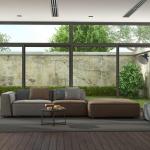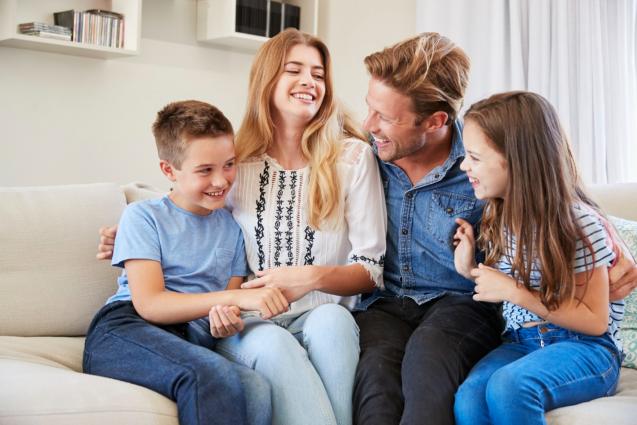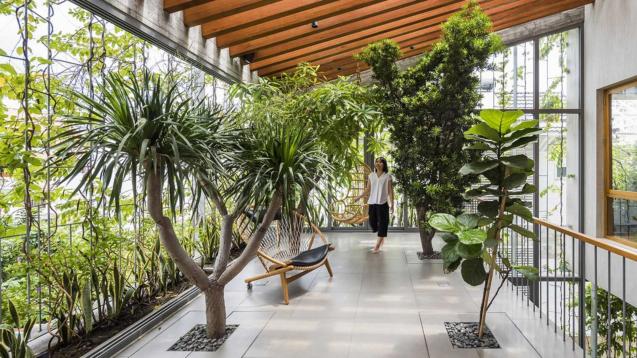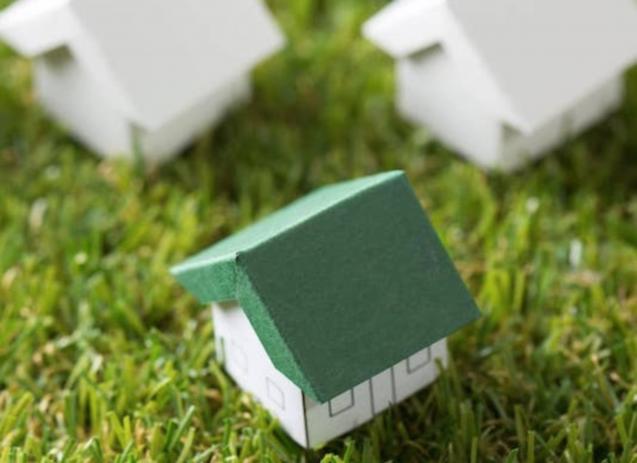
What Are Passive Homes & What Can They Do For You?
By Green Edge Builders|September 19, 2021
Along with the growing concerns on climate change, taking the appropriate measures to reduce our negative impact on the environment should begin at home. Modern building technologies have made this possible by creating many opportunities to improve energy efficiency.
As the more popular option in the green building movement, passive homes are designed to create a comfortable living space that eliminates the use of artificial heating and cooling systems. Instead, a passive home harnesses the heat released from the sun for sustainable and cost-effective alternatives, hence reducing the harmful effects of pollution.
In this article, we share some information about passive homes and its benefits.
Why choose a passive design home?
The objective of passive design is to harness the climate to keep your home at a comfortable temperature all year round, without the need for air conditioners or heaters. Temperature control accounts for around 40% of the average Australian household’s energy use, and hiring passive home builders will dramatically reduce this. In many cases, it can even eliminate it.
We know reducing pollution from our energy usage helps to protect the environment, and with a passive design home, energy reduction will become just that – passive! Thanks to the temperature regulation of passive designs, there will be less of a need to turn on the air conditioner when it’s hot outside and the heater when it’s cold.
Passive Design Principles
The hallmarks of passive design can be broken down into the following elements:
Ventilation
Passive homes are designed to maximise the natural air that can be allowed in the home.
Preventing damp and mound, ventilation is utilised for passive cooling of the home. Passive ventilation is controlled mainly through windows and doors, and can also be controlled through purpose-built vents.
Thermal Mass
In a place like Melbourne where the temperature can go between two extremes in a single day, thermal mass is what keeps your home from doing the same thing.
Thermal mass is the ability of a material to store heat energy. This means that when a warm day turns into a cold night, thermal mass will regulate heat when it’s hot and release it when it gets cold. This is how the temperature stays at a comfortable average.
Materials that have a high thermal mass include concrete, tiles, stone, and bricks. Lighter materials such as timber have a lower thermal mass.
Shading
The use of shading such as eaves, awnings, and plants can block up to 90% of the sun’s heat.
The aim of shade is to shield your home from the sun’s heat in warmer months while still being able to harness the power of the sun to heat your home in the cooler months. This can be achieved by being aware of the sun’s angle in your location. Knowing this, your shading should be designed with the sun’s summer and winter paths in mind, keeping temperatures comfortable year-round.
Layout
Keeping ideal orientation in mind, it’s also important to consider the layout of the different rooms in the house. North-facing rooms are ideal for living areas as they allow for all-day sun, although shading may be needed to prevent overheating in summer. East-facing rooms offer morning sunlight and cooler afternoons, making them ideal for kitchens and bedrooms.
West-facing rooms offer good afternoon light, but are more prone to overheating. South-facing rooms are generally not recommended for living spaces due to their poor light and heat retention, but can be utilised for garages, laundries, and bathrooms.
Insulation
Insulation acts as the barrier between a comfortable inside temperature and the outside temperature, and is required in the floors, walls, and roof. Good insulation can reduce or eliminate the need for heating.
The requirements for insulation also depend upon the climate, as insulation may be required primarily to keep heat out or in. It also needs to work in tandem with other passive design principles, as a well-insulated home in the wrong location or with the wrong orientation or layout will create an ‘oven effect’ that overheats the home.
Orientation
Where the home is placed on the site is very important when it comes to effectively controlling the temperature through passive design.
Generally, for Melbourne conditions, a north-facing structure is the ideal orientation as it gives maximum sun exposure in winter to keep your home warm and maximises shade in summer to keep it cool.
Building Location
Location underpins how your passive design will be structured, as the climate where you are will have a massive impact on how your home will work for you.
Melbourne climate, according to the Köppen climate classification, is part of an Oceanic climate that also includes most of southern and eastern Victoria. Passive design has to work for the climate that you’re in. A passive designed Queensland home would be ineffective in Melbourne and vice versa.
Looking for expert passive home builders? Look no further than Green Edge Builders! Passionate about making the next generation of homes more sustainable than ever before, we are committed to building passive house designs in Melbourne for environmentally friendly homes. Get in touch with our passive house builders in Melbourne today.
As the more popular option in the green building movement, passive homes are designed to create a comfortable living space that eliminates the use of artificial heating and cooling systems. Instead, a passive home harnesses the heat released from the sun for sustainable and cost-effective alternatives, hence reducing the harmful effects of pollution.
In this article, we share some information about passive homes and its benefits.
Why choose a passive design home?
The objective of passive design is to harness the climate to keep your home at a comfortable temperature all year round, without the need for air conditioners or heaters. Temperature control accounts for around 40% of the average Australian household’s energy use, and hiring passive home builders will dramatically reduce this. In many cases, it can even eliminate it.
We know reducing pollution from our energy usage helps to protect the environment, and with a passive design home, energy reduction will become just that – passive! Thanks to the temperature regulation of passive designs, there will be less of a need to turn on the air conditioner when it’s hot outside and the heater when it’s cold.
Passive Design Principles
The hallmarks of passive design can be broken down into the following elements:
Ventilation
Passive homes are designed to maximise the natural air that can be allowed in the home.
Preventing damp and mound, ventilation is utilised for passive cooling of the home. Passive ventilation is controlled mainly through windows and doors, and can also be controlled through purpose-built vents.
Thermal Mass
In a place like Melbourne where the temperature can go between two extremes in a single day, thermal mass is what keeps your home from doing the same thing.
Thermal mass is the ability of a material to store heat energy. This means that when a warm day turns into a cold night, thermal mass will regulate heat when it’s hot and release it when it gets cold. This is how the temperature stays at a comfortable average.
Materials that have a high thermal mass include concrete, tiles, stone, and bricks. Lighter materials such as timber have a lower thermal mass.
Shading
The use of shading such as eaves, awnings, and plants can block up to 90% of the sun’s heat.
The aim of shade is to shield your home from the sun’s heat in warmer months while still being able to harness the power of the sun to heat your home in the cooler months. This can be achieved by being aware of the sun’s angle in your location. Knowing this, your shading should be designed with the sun’s summer and winter paths in mind, keeping temperatures comfortable year-round.
Layout
Keeping ideal orientation in mind, it’s also important to consider the layout of the different rooms in the house. North-facing rooms are ideal for living areas as they allow for all-day sun, although shading may be needed to prevent overheating in summer. East-facing rooms offer morning sunlight and cooler afternoons, making them ideal for kitchens and bedrooms.
West-facing rooms offer good afternoon light, but are more prone to overheating. South-facing rooms are generally not recommended for living spaces due to their poor light and heat retention, but can be utilised for garages, laundries, and bathrooms.
Insulation
Insulation acts as the barrier between a comfortable inside temperature and the outside temperature, and is required in the floors, walls, and roof. Good insulation can reduce or eliminate the need for heating.
The requirements for insulation also depend upon the climate, as insulation may be required primarily to keep heat out or in. It also needs to work in tandem with other passive design principles, as a well-insulated home in the wrong location or with the wrong orientation or layout will create an ‘oven effect’ that overheats the home.
Orientation
Where the home is placed on the site is very important when it comes to effectively controlling the temperature through passive design.
Generally, for Melbourne conditions, a north-facing structure is the ideal orientation as it gives maximum sun exposure in winter to keep your home warm and maximises shade in summer to keep it cool.
Building Location
Location underpins how your passive design will be structured, as the climate where you are will have a massive impact on how your home will work for you.
Melbourne climate, according to the Köppen climate classification, is part of an Oceanic climate that also includes most of southern and eastern Victoria. Passive design has to work for the climate that you’re in. A passive designed Queensland home would be ineffective in Melbourne and vice versa.
Looking for expert passive home builders? Look no further than Green Edge Builders! Passionate about making the next generation of homes more sustainable than ever before, we are committed to building passive house designs in Melbourne for environmentally friendly homes. Get in touch with our passive house builders in Melbourne today.



